Mecca
Holy site under construction
Warning: Use of undefined constant ids - assumed 'ids' (this will throw an Error in a future version of PHP) in /home/clients/cbf26065d2af2a606c600e47be560e46/web/wp-content/themes/mn2/theme/inc/theme_functions_cleaning.php on line 61
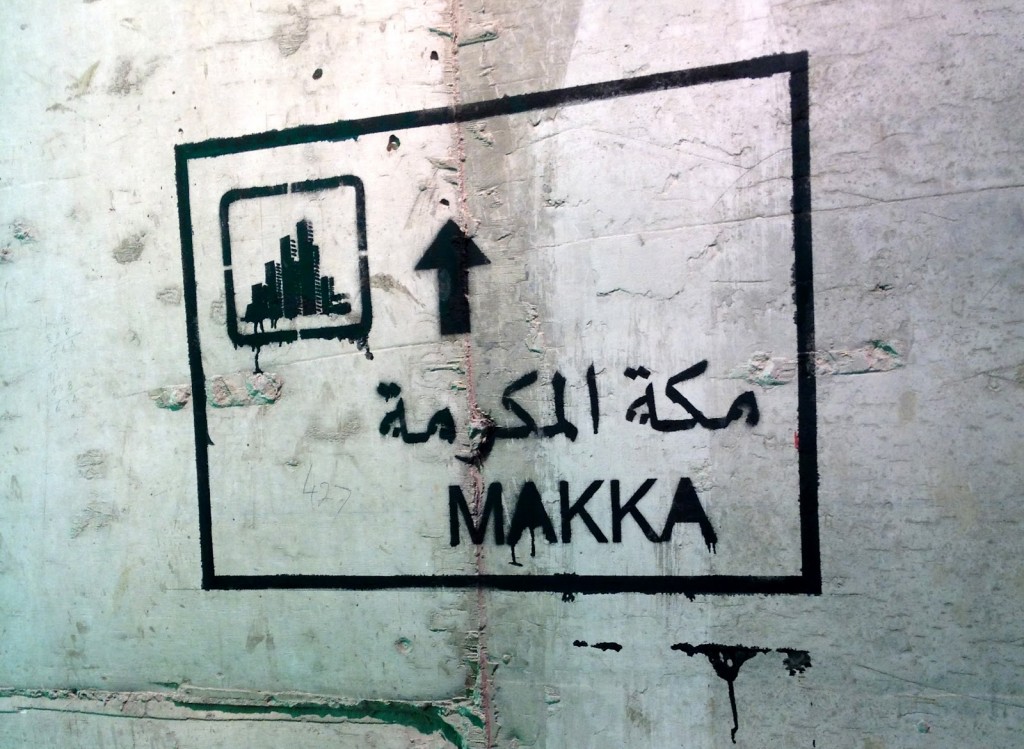
In the recent past, the icon for the Holy City of Mecca was Masjid Al-Haram (the Grand Mosque), surrounding the Kaaba and the largest mosque in the world. Meanwhile, demolished buildings and destroyed archaeological sites already ceased to exist in the cityscape. This was the image imprinted in my mind and engraved in my anticipation when reaching the Holy Site on my first visit to Mecca one November morning in 2010.
But the image was forever destroyed upon arrival. What was meant to be an archaeological, spiritual and historic site, looked like a cosmopolitan development project in the making.
The most striking thing of all was a large clock-structure that I was to discover was the “Mecca Clock Royal Tower Hotel”. Apparently, it was designed to become the world’s second tallest building with the world’s biggest clock, the faces of which would be at least six times the size of Big Ben. I do appreciate the need to expand and build a capacity to accommodate the increasing number of pilgrims from around the world, and to facilitate an ease of immense movement. But this was far from what the standards of sustainable development, let alone preservation of historical architecture would require.
Leaving the Holy Site, I could not resist looking at the many cranes through the car’s back window in continued disbelief.
“Miss… MISS?”
I realised the driver was calling on me and I suddenly remembered the real motif of this visit: to walk through the city and capture its graffiti scene. Despite being familiar with the graffiti scene in a few major cities in the kingdom (Riyadh, Jeddah and Khobar), I did not know what to expect from Mecca. Its holy significance made it difficult to envision graffitied walls; let alone its urban space. I had much curiosity to feed.
Evaluating a city’s urban space is an inevitable task for someone observing its graffiti scene. In fact, it directs the route to ensure inclusion of the range of socio-political and socio-economic representations of society. In terms of identity, the space in the streets and alleyways of Mecca was difficult to assess. Indeed, it felt more cosmopolitan than “Saudi” — or “Muslim” for that matter — but the graffiti was for the most part similar to what I had seen before.
The most common incentive for expression — or form of protest — on Mecca’s walls, like elsewhere in the kingdom, remains countless declarations of love. The remaining motivators for the most part cover the common pop-culture references, ranging from Tupac to support for different football teams.
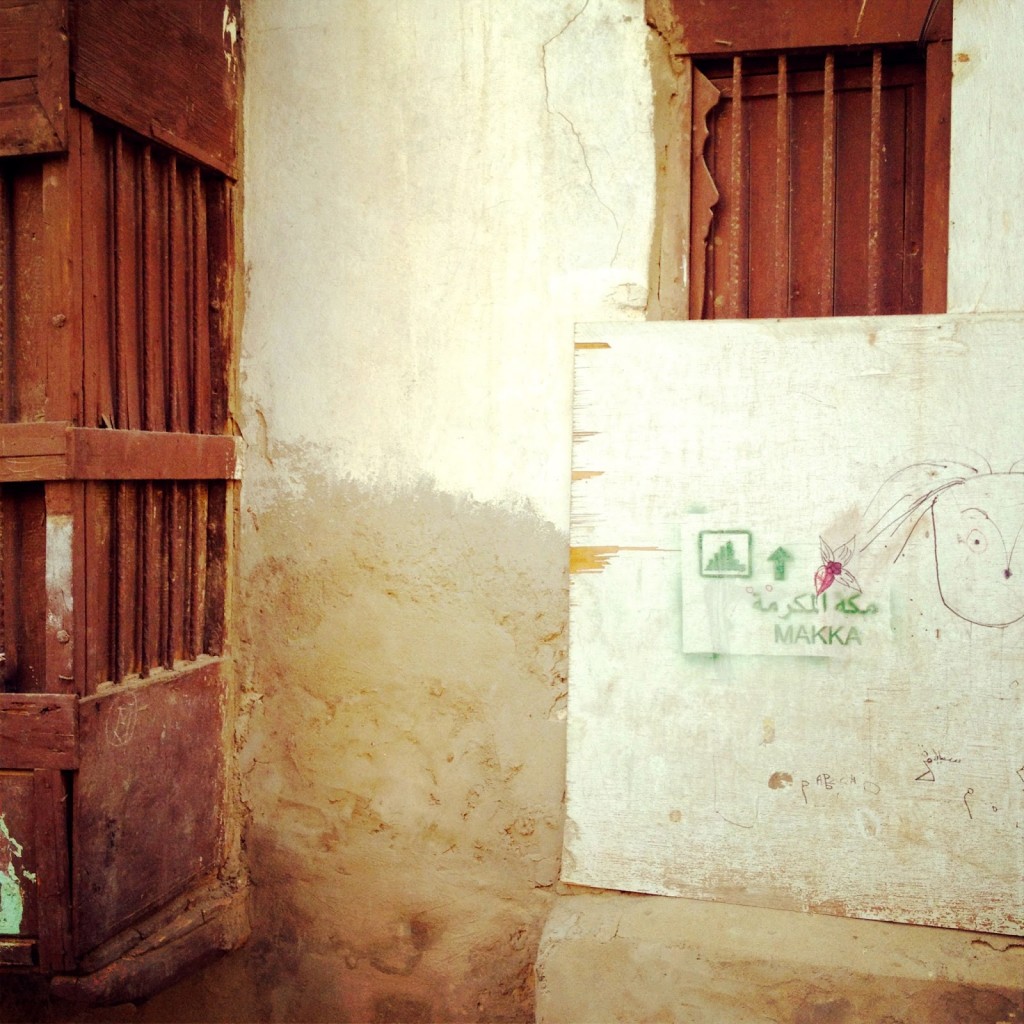
I left Mecca that evening with the feeling of astonishment dominating any attempt of recollecting the Haram. Drowning in reflection, I wondered how my objection to the construction site would be expressed on the walls. The rarity of using our streets as a platform for addressing current events and social commentary makes it ever more challenging. Then, a little over a year later, I stumbled across this brilliant representation of that very grievance on Jeddah’s walls.
What made it so noteworthy was not the fact that the stencil, done by the talented Sarah Mohanna Al Abdali, expressed a feeling that we shared. It was, quite simply, the fact that it was out there on the street, in public rather than private in our thoughts. When a statement is brought to the public discussion table, an interactive dialogue is empowered which is otherwise evaded. And, what is more important than the statement being expressed, is the conversation itself. A conversation we should have had long before a regrettable and unnecessary project such as the “Mecca Clock Royal Tower Hotel” was approved.
We may have been able to save our icon.
11 thoughts on “Mecca”
Leave a Reply
You must be logged in to post a comment.







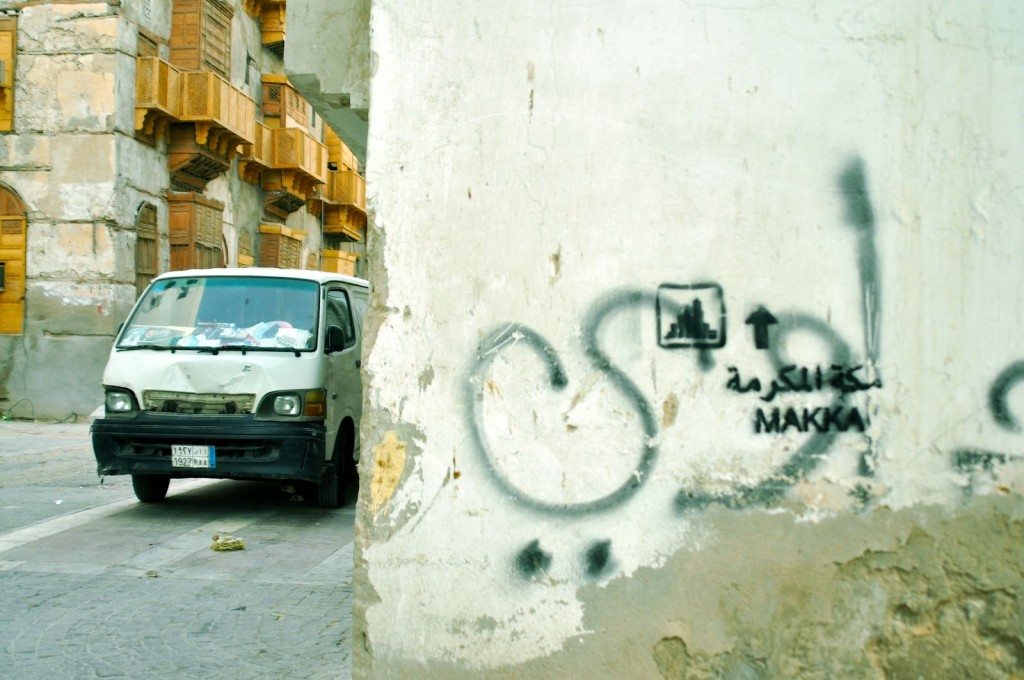
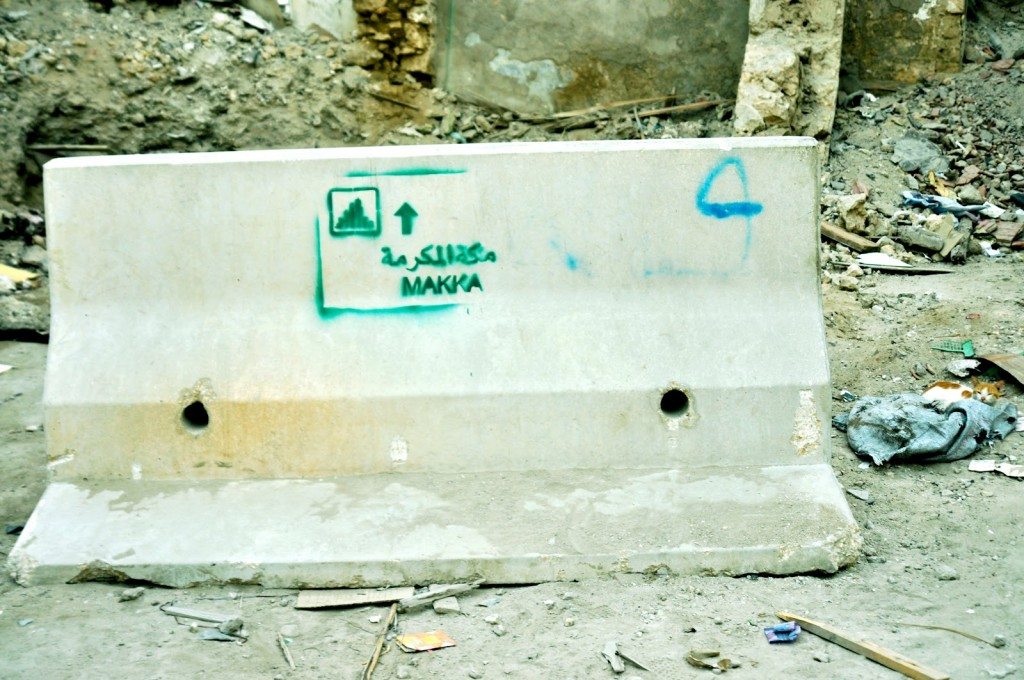
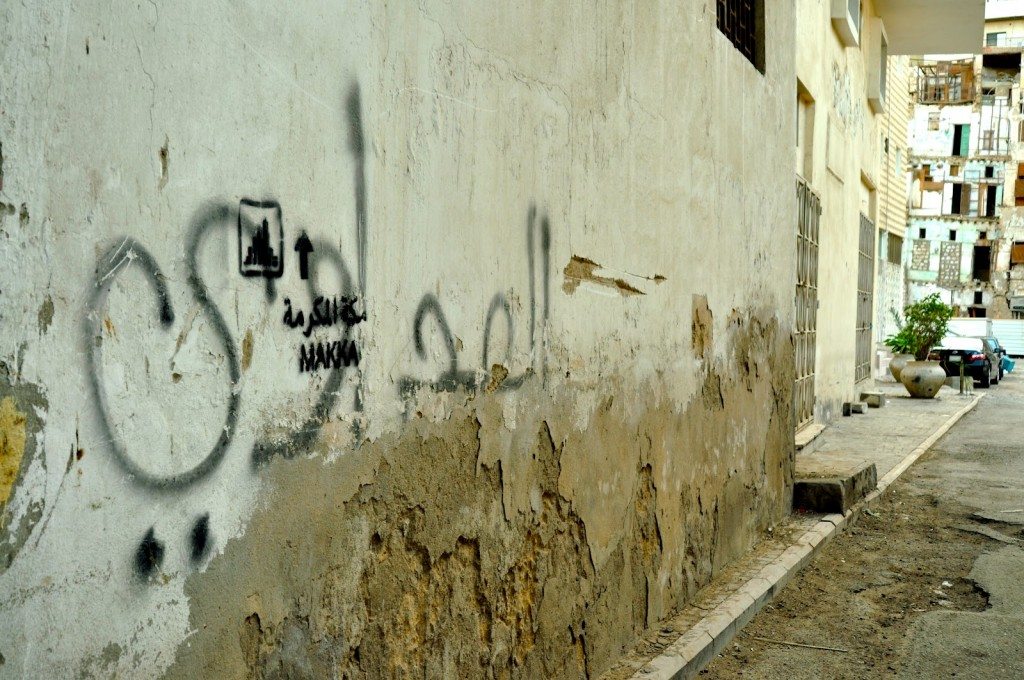
I have waled between “haram” and Mina on foot this past Pilgrimage. And although I had taken the intended route , I found myself walking ontop garbage, sewege, and sleeping people.
Perhaps if the authorities wanted to WOW the pilgrims the may have showed them true Islam, wisdom and practicality instead. After all, wasn’t the Prophet the first environmental activist???
http://islam.about.com/od/activism/fr/Green-Deen.htm
The Urban Planning priorities are indeed unfortunate, but the residents also have a responsibility to keep their city clean. The city is a reflection of the collective society. It is constantly changing to reflect the constantly changing political and social dynamics of the urban space.
Every resident plays the role he or she claims.